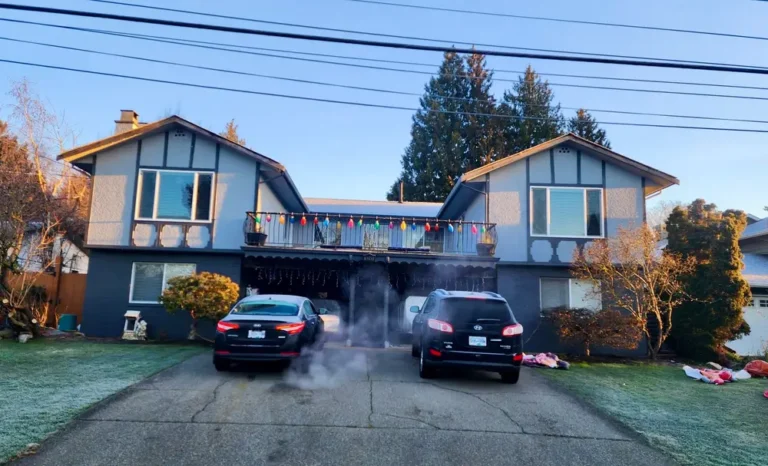Karlie Kloss and Josh Kushner just dropped $29.5 million on Malibu’s legendary Wave House. Take a look inside.
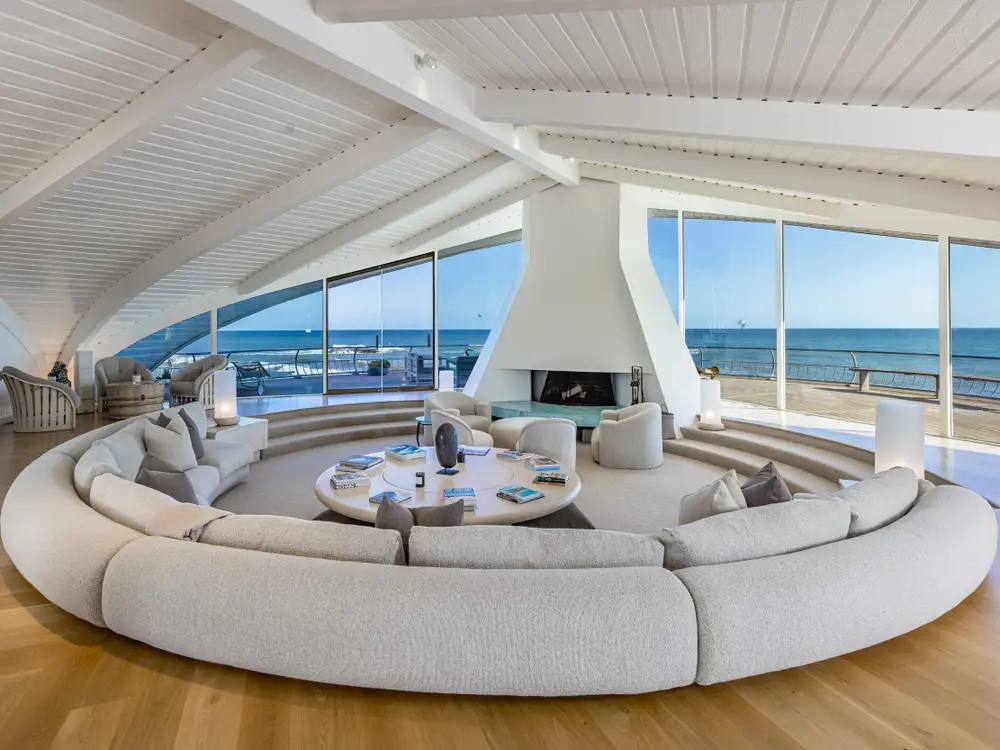
The living room of Wave House, architect Harry Gesner’s ode to the ocean.
Karlie Kloss and Joshua Kushner are the new owners of an iconic Malibu property, The Wall Street Journal exclusively reported on Monday.
According to unnamed sources familiar with the deal who spoke to the Journal, the supermodel, 32, and the billionaire venture capitalist, 39, purchased Malibu’s Wave House for $29.5 million over a year after it hit the market for the first time since 1987.
The estate of Mo Ostin — the late record executive known for signing Jimi Hendrix and The Kinks who was the home’s most recent owner — listed the property for sale in June of 2023 for $49.5 million.
Representatives for the couple and Zen Gesner, the real-estate agent on the listing and son of the Wave House’s visionary architect, did not immediately respond to requests for comment from B-17.
The beachfront property, with three rooflines shaped like cresting waves and topped with layered shingles evocative of fish scales, is nestled into a secluded cove in Western Malibu.
Kloss and Kushner — the brother of Donald Trump’s son-in-law, Jared Kushner, and youngest son of real-estate mogul Charles Kushner — would be the latest in a line of notable owners.
Take a peek inside their new digs, and find out more about the history behind the architectural icon.
Architect Harry Gesner designed the Wave House to mesh with the surrounding coastal landscape.
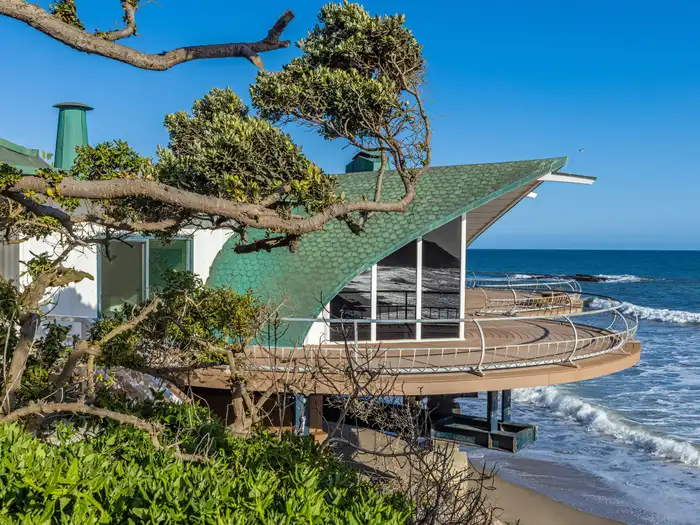
The roofline of Wave House.
Before crooner Rod Stewart scooped it up in the 1970s, or record executive Mo Ostin bought it from him in 1980s, the so-called Wave House of Malibu was owned by Glenn and Gerry Cooper.
The Coopers were friends with Gesner, a California architect, and commissioned him to design a house for their family that epitomized their love of the outdoors.
Gesner said his first sketches of the property were on a balsa wood surfboard, and they remained true to the finished product.
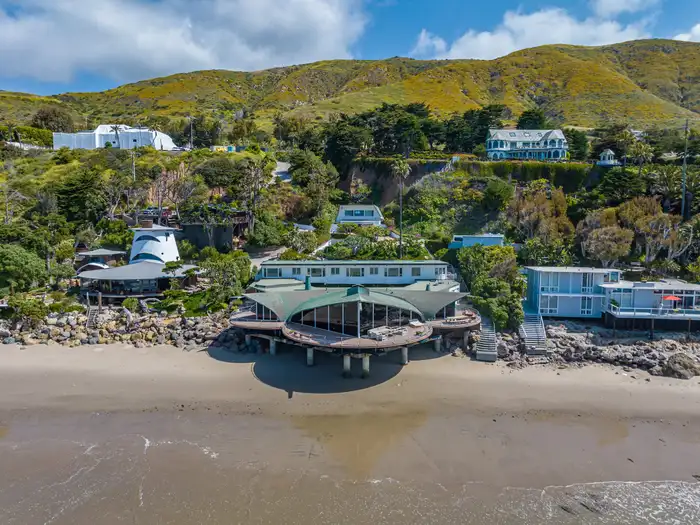
Wave House viewed from the ocean.
After the group found the site — a hidden cove with good surf up the coast from the famous Malibu Colony neighborhood — Gesner spent two days on a surfboard bobbing out at sea, peering back at the parcel.
It was on a 12-foot balsa wood surfboard that the architect first sketched the house with a grease pencil, the lore goes.
“It was exactly as it is now, in every way, thrusting out into the surf at high tide and nestled back in the sand at low tide,” he told Lisa Germany in her 2012 book “Houses of the Sundown Sea: The Architectural Vision of Harry Gesner.”
The roughly 6,200-square-foot house, with six bedrooms and eight bathrooms, was a success in the original owners’ eyes.
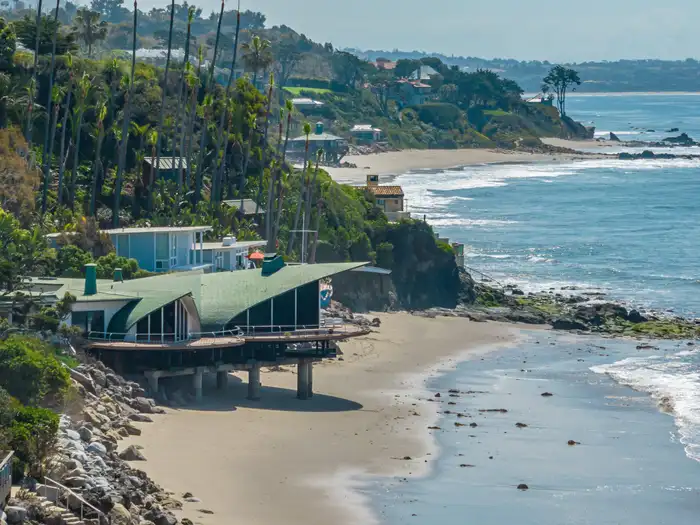
Wave House from the side.
“It was as if we lived within, not apart from the forces of nature, and surged with her changing moods,” Glenn told Germany.
“Such immediate challenges of nature caused all of us to be always responsive, alive, and aware. Such constant change of the tides reminded us of the fragility of life, of the moods and forces of nature,” she added. “And the powers of nature drove us all to go farther, to be better, to meet the challenges of each day with undaunted bravado.”
The house’s most notable feature is its roofline, with three oceanfront rooms shaped like cresting waves and large windows overlooking the churning sea.
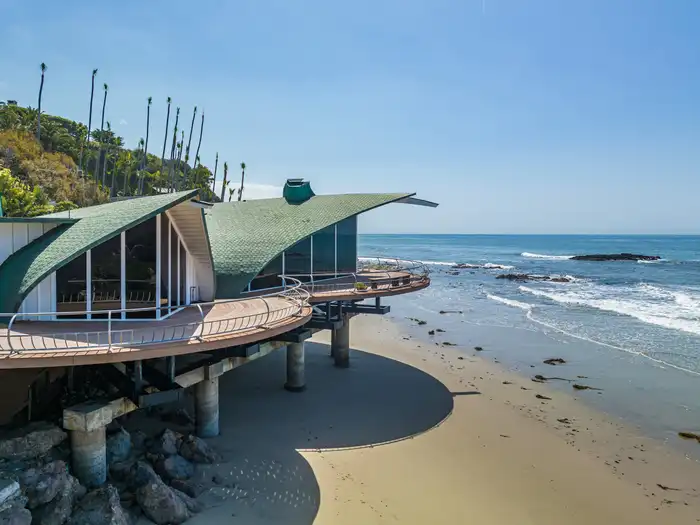
Wave House from the side.
For its quirky exterior that mirrors the swells of the Pacific Ocean it faces, Wave House has become an icon of California midcentury architecture since its completion in 1963.
The three oceanfront rooms are ringed by 176 feet of curved deck overlooking the waves.
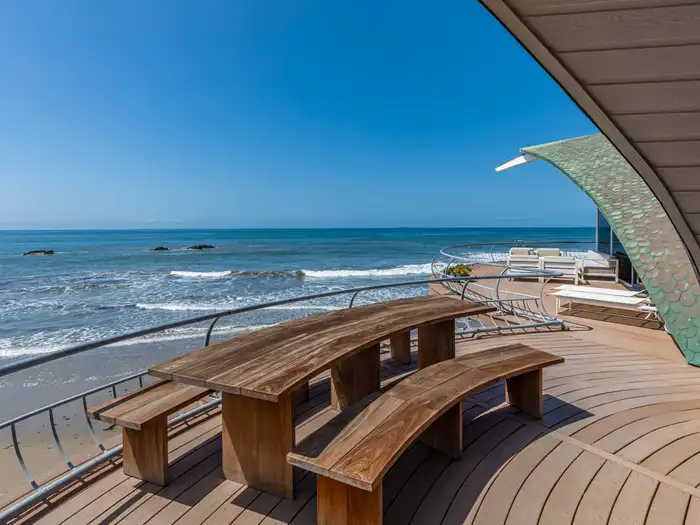
The decks of Wave House curve to match the shape of its peaked roofs.
According to the listing, the primary suite is also located close to the beachfront deck.
Five other bedrooms, most of which have their own views of the ocean, are located on an upper level of the property.
A smaller structure that doubles as a guesthouse and garage also houses other bedrooms.
In the center of the 56-foot by 44-foot living room is a fireplace flanked by Santa Barbara fieldstone.
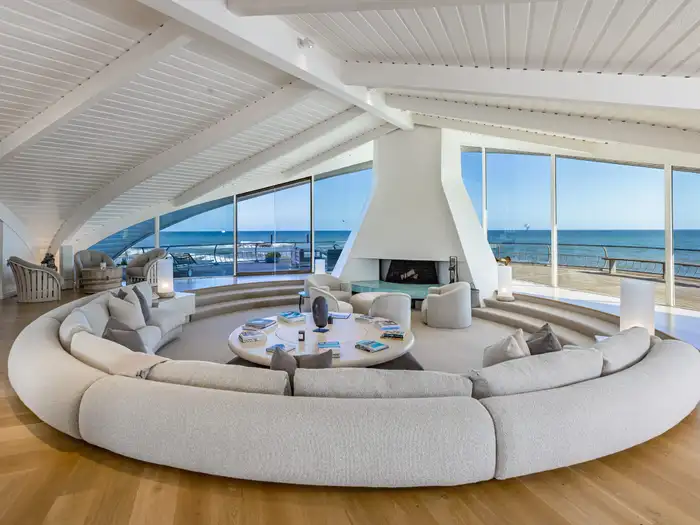
The living room’s conversation pit.
The original material remains under the stucco that was added on in later years.
“Oftentimes, you can have too much view and you need a foreground to look around or an inner view to rest your eyes and thoughts on,” Gesner said of the fireplace.
Another focal point in the room is its sunken conversation pit, a favorite midcentury design convention.
In contrast to the parts of the home that jut toward the sea, there’s also a section that settles into the rocky landscape behind the house.
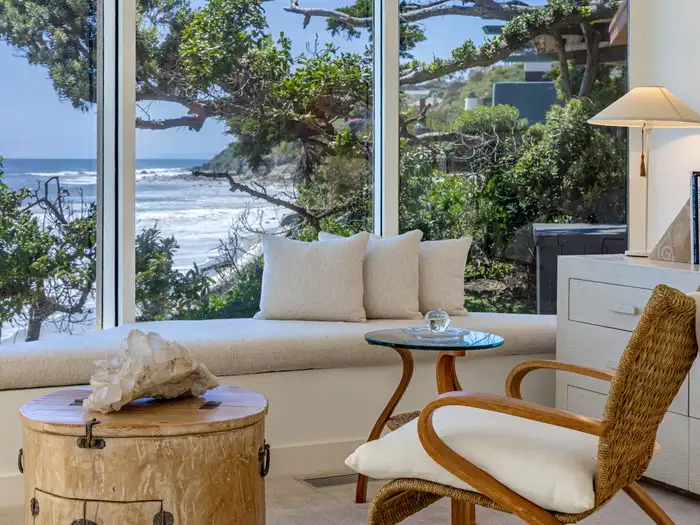
A bedroom.
“For me, as a mother, I experienced the inner space as an overreaching large bird with its body and two wings covering and protecting me and my brood, especially significant when the vagaries of tidal forces and storms brought the ocean surging under the deck,” Glenn told Germany.
Some speculate that the Wave House influenced Danish architect Jørn Utzon’s design for the Sydney Opera House.
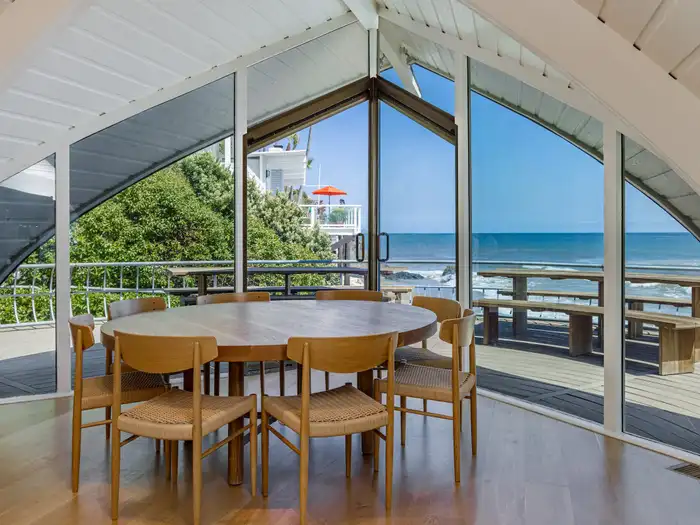
The dining area.
To that, Harry replied, “I wish people would not insist that something looks like something else, but they do. It’s human nature and a bore.”
Rock star Rod Stewart purchased the home in the 1970s and sold it to the late celebrated music executive Mo Ostin in 1987.
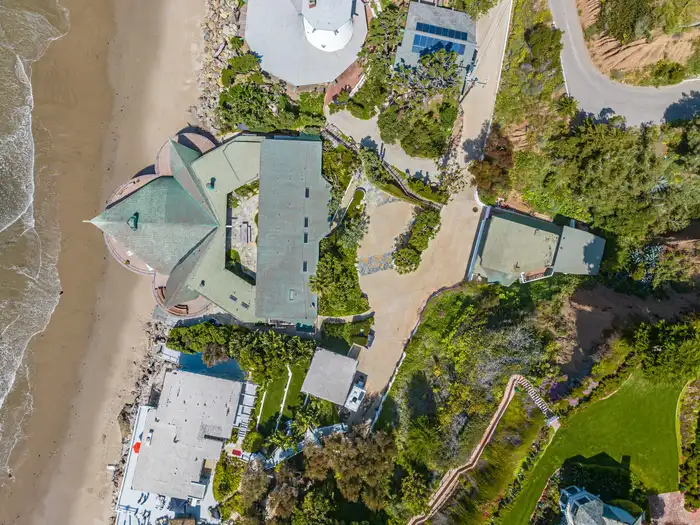
Wave House from above.
The Journal reported that Ostin, who died in 2022 at age 95, oversaw Frank Sinatra’s Reprise label and signed acts like Jimi Hendrix, Prince, and Madonna.
He bought the Wave House from the original owners in 1987.
Gesner’s private residence next door, the Sandcastle, was put on the market around the same time as the Wave House.
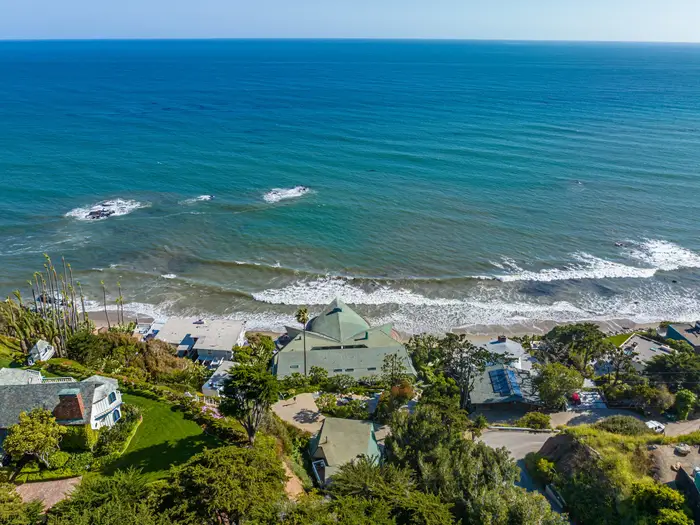
Wave House stands in the center with the Sandcastle to its right.
Gesner, the architect, died in 2022 at the age of 97.
After designing Wave House, Harry bought land next door and built himself and his family a home inspired by sandcastles.
Completed in 1974, the aptly named Sandcastle house hit the market in May 2023 for $27 million. The six-bedroom, six-bathroom property sold in February 2024 for $13.5 million.
Gesner’s son Zen, a real-estate agent behind the sale of the Wave House, told the Journal that neither it nor the Sandcastle has landmark protection.
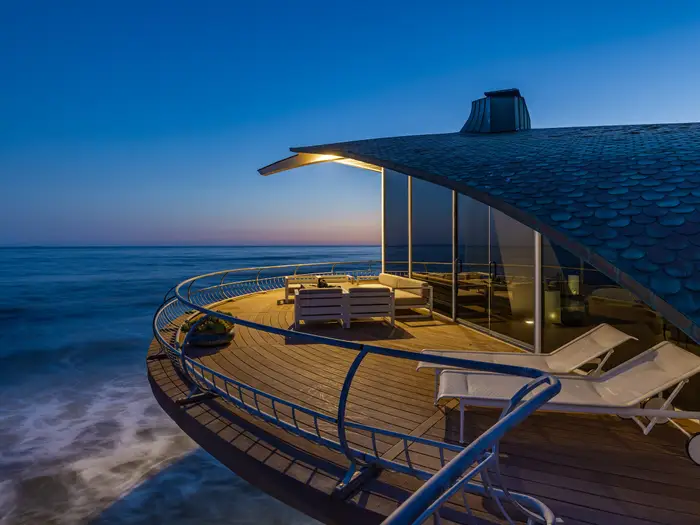
Wave House at dusk.
Zen Gesner told the outlet he feels confident buyers would not want to tear down the homes.
“It’s our hope that nobody ever has that intention,” he said.





